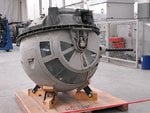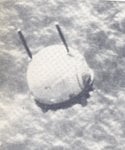parsifal
Colonel
I was watching a program call "Lost Documentaries Of WWII, that showed a lot of colour and colourised vision of the 8th AF. It was a great doco, more about the personal experiences of the flyers, both US and german. The heroism really moved me to be honest.
There was one story about a ball gunner stuck in the turret alive. The B-17 was going down, the gear was stuck. There was a re-creation of the frantic discussion between the pilot of this bird and the tower...what to do about the poor devil in the turret. They never did say what happened, and i found myself hoping against hope that he got out alive. I know that he wouldnt have...stuck in the belly ball turret with no wheels is going to end just one way, but I was mostly saddened for the poor pilot who at maybe 22 would have to kill one man to try and save the rest of the crew.
What do you say to that guy. How do you console him.
The plane I think was from either the 92nd or the 100BG and the accident happened some time in the latter part of 1943, perhaps in one of the Schweinfurt Raids.
I was wondering if anyone had heard of this story, and what happened to that plane, the gunner and the rest of the crew.
Its strange how one story about one man can move us to remember the debt we can never repay
There was one story about a ball gunner stuck in the turret alive. The B-17 was going down, the gear was stuck. There was a re-creation of the frantic discussion between the pilot of this bird and the tower...what to do about the poor devil in the turret. They never did say what happened, and i found myself hoping against hope that he got out alive. I know that he wouldnt have...stuck in the belly ball turret with no wheels is going to end just one way, but I was mostly saddened for the poor pilot who at maybe 22 would have to kill one man to try and save the rest of the crew.
What do you say to that guy. How do you console him.
The plane I think was from either the 92nd or the 100BG and the accident happened some time in the latter part of 1943, perhaps in one of the Schweinfurt Raids.
I was wondering if anyone had heard of this story, and what happened to that plane, the gunner and the rest of the crew.
Its strange how one story about one man can move us to remember the debt we can never repay


